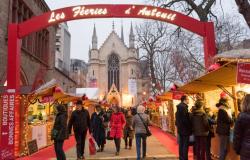English or French, Persian or Mediterranean, princely or monastic, individual or public, botanical or medicinal, real or dreamed, yesterday or today: gardens of all kinds are explored in this beautiful work. Composed in four voices which intertwine without confusing each other, it is not a treatise but rather a free poetic wandering – a succession of short thematic paragraphs richly illustrated with drawings, paintings and photographs. The dispersion of the felm evokes that of the garden itself, a teeming and changing mosaic that continues to reinvent itself, from season to season, from century to century. Difficult, if not impossible, to talk about it in the singular. The garden is multiple. He has for “vocation to collect, protect and allow observation of the incredible luxuriance and infinite variety of the sensitive world, and therefore of the living. » Its multiplicity is constantly metamorphosing. “In the garden everything is transformed. […] Life is always inventing. » Man is fully part of this life in motion. Nature and culture, in the garden, mingle in an inextricable skein whose different dimensions are explored throughout the pages. We move from herbaria to architectural plans, from hydraulic engineering to gardeners’ tools, from statuary to entomology. The gardens “gather[ent] in its best enclosure, that of plants, techniques, knowledge and know-how and [des] artistic practices”. Combining all facets of reality, they are as many “microcosms capable, each in their own way, of reflecting, if not containing, the entire universe.” And “full shortcut” towards the Whole, says Victor Hugo.
We understand that this “holistic reality” a miniature, “high place of meditation”, could have charmed some philosophers, Cicero in the lead, with whom this colorful promenade opens. The garden gives food for thought. It is because, a parenthesis in existence which keeps the urgency and necessities of everyday life at bay, it is the place of daydreaming and contemplation, of idleness and relaxation, “amenity and the sweetness of life”. The wooded tranquility of the park is conducive to all meditations. « Born from the work, imagination and perseverance of humans in dialogue with nature”, the gardens have a “existential material vocation”. In the heart of the wasted sadness of winter, this horticultural stroll, sensitive and profound, best prepares for the return of spring.






